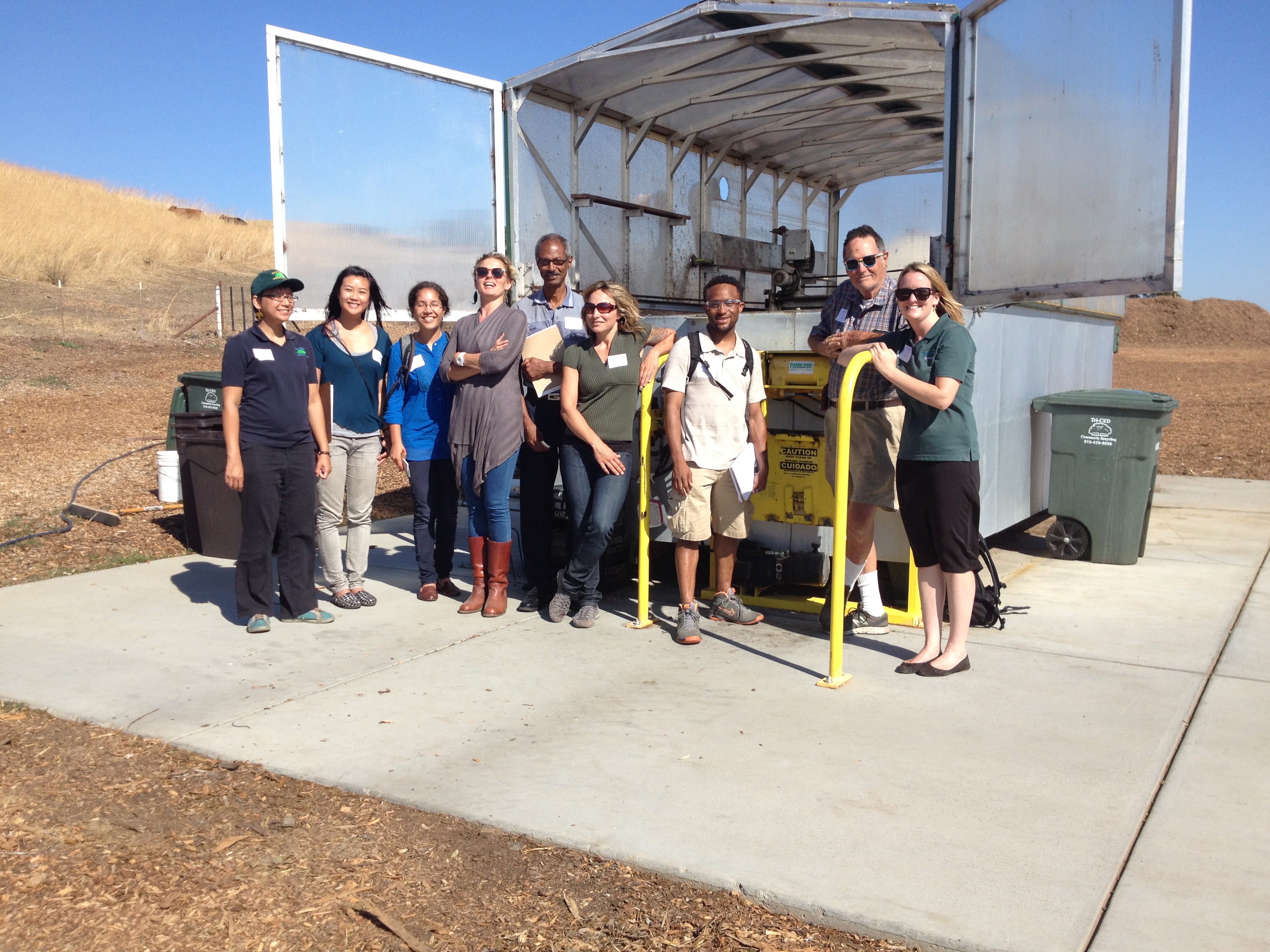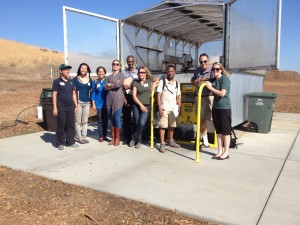MOORE’S MUSINGS
By John Moore, Henn, Etzel and Moore
A semi-monthly feature, exclusive to NCRA News, from NCRA general counsel and board member John Moore, concerning recent legal decisions relating in some manner to Zero Waste.
WHAT DOES SAME SEX MARRIAGE HAVE TO DO WITH GARBAGE? (PART II)
(PART I: What Does Proposition 8 Have To Do With Zero Waste?)
For one thing, both subjects have been examined by the Supreme Court in terms of their constitutionality (or lack thereof) under the Fourteenth Amendment. That amendment, ratified as a legacy of the Civil War to equalize the races of Americans, states: “All persons born or naturalized in the United States, and subject to the jurisdiction thereof, are citizens of the United States and of the State wherein they reside. No State shall make or enforce any law which shall abridge the privileges or immunities of citizens of the United States; nor shall any State deprive any person of life, liberty, or property, without due process of law; nor deny to any person within its jurisdiction the equal protection of the laws.”
The recent Supreme Court case of Obergefell v. Hodges[i], decided with a 5-4 majority, prohibits discrimination against same sex couples in issuing marriage licenses, holds that same sex marriage is one of the “liberties” described in the 14th Amendment.
In 1905 the same Court held that garbage, as described in local ordinances, was not “property”, which the same amendment says cannot be taken without due process. There is no evidence to suggest that the drafters or ratifiers of the 14th Amendment ever considered either same-sex marriage or garbage. In his dissent in Obergefell, Justice Scalia eloquently frames the question that if the constitutional grant of the power to make laws is reserved to the “People”, what the five member majority of the Court did in Obergefell was to override that constitutional power.
When examining existing legal precedent relating to discard management, it is well to remember that 5 votes on the Supreme Court can make or change a law. It is also worth remembering that one person’s perception of a just change is another’s view that the same change is revolutionary.
The framers of the constitution left open to interpretation whether future acts of the republic were to be measured by the truths and values of 1793 or was legal interpretation to evolve with the republic. The fact that the power to make laws was reserved to the People and their elected legislators suggests the former. And since the constitution clearly reserves lawmaking power to the states unless the constitution provides otherwise[ii], an important question is which of those “unreserved powers” is federal in nature and enforceable by federal courts. Many Court decisions today applauded were required to navigate these conundrums.
For example, the 14th amendment does not say there is a federal power to enforce its premise of equal protection of the laws. Southern (former confederate) states long argued successfully that only the states had such enforcement power and they had no interest in enforcing it except in the manner they interpreted the Amendment. In 1873, a Supreme Court of Louisiana decision that a New Orleans exclusive franchise to maintain slaughterhouses was constitutional was upheld by the US Supreme Court on the ground that even if the franchise grant were a 14th Amendment violation, the federal judicial system had no power to enjoin it. [iii]
In another example, the southern states’ concept of “separate but equal” was sanctioned by the Supreme Court because it found that the framers and ratifiers of the 14th Amendment lived in a segregated society and the language of the Amendment does not suggest any intent to change that. The Court’s precedent holding that separate but equal satisfied the 14th Amendment lasted from 1896[iv] to 1954[v]. In those 60 years the 14th Amendment never changed, only the Court’s perception of what was right had changed. The 1954 decision in Brown v. Board of Education was unanimous, unlike the 5-4 majority in Obergefell.
For yet another example, in 1857, a 7-2 majority of the same Court decided that a slave named Dred Scott could not sue in federal court to have his freedom decreed because he was not a citizen of Missouri, but was rather “property” and property could not sue anyone in federal court. This decision, authored by Chief Justice Roger Taney, himself a slaveholder, rested its constitutional justification upon the view that the “People” described in the Constitution and the Declaration of Independence (the same “People identified by Justice Scalia in Obergefell) were intended by the drafters not to include African people or their descendants. Chief Justice Taney also believed that the states were not bound to a permanent union but rather had joined, and could leave, the union as they chose. Opposition to that premise led to the Civil War.
Abraham Lincoln made a revolutionary response to the Dred Scott decision: “If this important decision had been made by unanimous concurrence of the judges, and without any apparent partisan bias, and in accordance with legal public expectation, and with the steady practice of the departments throughout our history, and had been in no part, based on assumed historical facts which are not really true, or, if wanting in some of those, it had been before the court more than once, and had there been affirmed and re-affirmed through a course of years, it then might be, perhaps would be, factious, nay even revolutionary to not acquiesce in it as precedent.
But when, as it true we find it wanting in all these claims to the public confidence, it is not resistance, it is not factious, it is not even disrespectful, to treat it as not having yet quite established a settled doctrine for the country.”
Lincoln’s Secretary of State William Seward expressed this view of Dred Scott more strongly, “Judicial usurpation is more odious and intolerable than any other among manifold practices of tyranny.” There are those who echo this sentiment about Obergfell and many other Court decisions.
Obergefell is an outgrowth of earlier court rulings about marriage rights under the 14th Amendment: In 1965, the Court struck down[vi] a Connecticut law prohibiting married couples from obtaining contraceptives. In 1967, the Court struck down[vii] a Virginia law prohibiting marriage between persons of a different race. For many people today those outcomes are just, and it is all right that the Supreme Court and not the People made those judgments. The Obergefell decision rests partly on the Court’s 1967 ruling in the Virginia case.
So let us examine garbage under the constitution. The Court decided two major cases in 1905, the first in Detriot and the second arising from San Francisco. In Gardner v. Michigan[viii] the Court affirmed a conviction of a man charged criminally with collecting garbage in violation of a Detroit city ordinance. Garbage was defined by the ordinance as: “The word ‘garbage’ shall be held to include every refuse accumulation of animal, fruit or vegetable matter that attends the preparation, use, cooking, dealing in or storing of meat, fish, fowl, food, fruit or vegetables, including dead animals and condemned foods found within the city limits.”
In California Reduction Company v. Sanitary Reduction Works[ix], San Francisco, by charter, provided for the exclusive franchise (which exists still 110 years later) for collection of garbage, which was challenged by a scavenging, would-be-competitor as a 14th amendment violation. While the definition of garbage under the Charter cannot be found in the opinion, the purpose of the Charter was to eliminate the then-prevalent noxious and disease-producing conditions when generators indiscriminately dumped their garbage into the public streets and waterways. The Court was satisfied that the City was justified by public health and safety concerns to pass this Charter.[x]
The Court in the 1905 San Francisco case recited two principles nowhere discussed in the 2015 Obergefell case and are quite inconsistent with the Obergefell outcome:
“…if a regulation, enacted by competent public authority avowedly for the protection of the public health, has a real, substantial relation to that object, the courts will not strike it down upon grounds merely of public policy or expediency.
“the possession and enjoyment of all rights are subject to such reasonable conditions as may be deemed by the governing authority of the country essential to the safety, health, peace, good order and morals of the community. Even liberty itself, the greatest of all rights, is not an unrestricted license to act according to one’s own will.”
The Court’s viewpoint in the Detroit case that garbage was not property seems to be at odds with views of later Courts, composed of different justices, that: 1) garbage was an article of interstate commerce[xi], (without stating exactly what in the nature of garbage made it an article of commerce) and; 2) Justice Kennedy’s (who authored Obegefell) statement in 1994 [xii] that “what makes garbage a profitable business is not its own worth but the fact that its possessor must pay to get rid of it.”[xiii]
Justice (later Chief Justice) Rehnquist dissented from the holding that garbage is an article of commerce since prior court precedent[xiv] convinced him, “I simply see no way to distinguish solid waste, on the record of this case, from germ-infected rags, diseased meat, and other noxious items.” In other words, the same type of material that was considered “filth” by turn of the 20th century writers; not what can be found in source separated recyclables in 2015.
So what has same sex marriage to do with garbage? Maybe garbage is not an article of commerce. Maybe regulating the collection of garbage is no longer a proper subject of government regulation. If no legislative action is required to command these outcomes, maybe rights under the constitution are more ephemeral than the framers desired. And today’s just resolution of an important issue by the Courts is tomorrow’s tyranny. Just saying.
CALENDAR
September 27, Annual Picnic
September 17, Board Meeting
September 28-30, Resource Recycling Conference, Indianapolis
October 15, Board Meeting
November 19, Board Meeting
# # #
[i] Obergefell v. Hodges 2015 WL 213646 (2015)
[ii] 10th Amendment, US Constitution
[iii] Slaughter-House Cases 16 Wall. 36 (1873)
[iv] Plessy v. Ferguson 163 US 537 (1896)
[v] Brown v. Board of Education 347 US 483(1954)
[vi] Griswold v. Connecticut 381 US 479(1965)
[vii] Loving v. Virginia 388 US 1(1967)
[viii] Gardner v. Michigan 199 US 325 (1905)
[ix] California Reduction Co. v. Sanitary Reduction Works, 199 U.S. 306 (1905)
[x] The Court and the cities enacting these laws were influenced by the then-seminal work of “Municipal Sanitation in the United States” by Charles Value Chapin. Chapin describes the need to regulate the disposal of what he called “filth”, which he characterized as “swill, brine, animal urine, stinking noxious liquid, butcher’s offal, and putrid animal or vegetable matter” (see p. 145-150
[xi] Philadelphia v. New Jersey 417 US 617 (1978)
[xii] C & A Carbone v. Town of Clarkstown, 511 U.S. 383 (1994)
[xiv] Asbell v. Kansas 209 U.S. 251 (1908).


